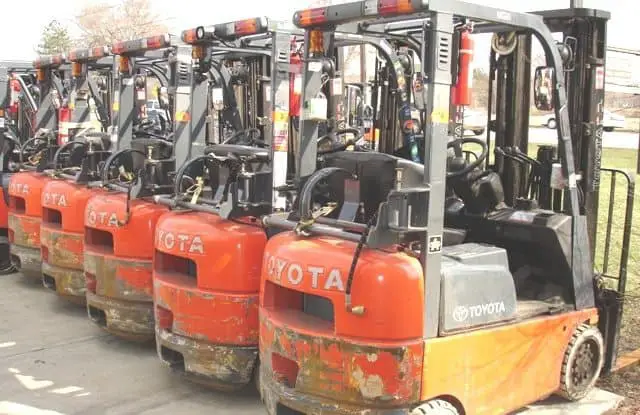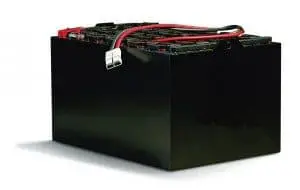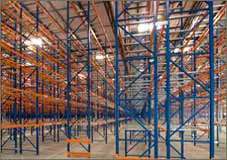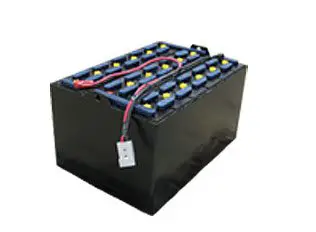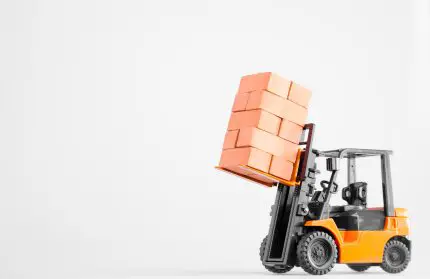 When buying a forklift, there are 4 considerations:
When buying a forklift, there are 4 considerations:
- Operational Requirements
- Performance
- Space efficiency
- Capital outlay versus total cost of ownership
For each of these areas, specific questions can be asked and answered to help identify the best lift truck for your operation. This is a guide to help a prospective lift truck buyer with the sometimes dizzying task of selecting the best lift truck for their operation.
Operational Requirements – What are you lifting or transporting?
Answer first your operational need with the smallest truck possible. This will serve you well for minimizing some of the other cost drivers such as: space requirements (land costs), initial investment (capital costs), and energy and repair costs (larger trucks cost more to repair and to fuel).
How long is your load?
Most warehouse forklifts are designed to carry a 4 foot long load. The load center the capacity it is rated on is 24″ (half the length of the load). Know the length of your load and request capacity around your load center, e.g. “a forklift with a 3,000lbs capacity at 24″ load center”.
How heavy is your heaviest load at your highest storage location?
Know the weight of your load being lifted to your top storage location, often called the top load beam. If you are in the food business and carry one of the heaviest pallets moved in a warehouse, a pallet of water, then your load weights are very likely to be no more than 2,000lbs at a 24″ load center. With the lighter bottle designs, these pallets are almost never double stacked.
Are you lifting this weight to your top load beam? Or are you keeping this product on the ground? This is important to know due to down-rating (d-rating for short). Here are some facts you will find useful in sizing equipment:
- Sitdown counterbalanced trucks have little or no down-rating below free-lift (lifting the height of the first mast stage, 83″ or 88″).
- Reach trucks have little or no down-rating below 230″.
- Many of the smallest pallet jacks have minimum capacities of 4,000 lbs or 4,500 lbs at prices below $5,000 each.
- Medium sized pallet jacks have minimum capacities of 6,000 lbs to 8,000 lbs.
Many companies will purchase a 5,000 lbs lift when a 3,000 lbs capacity lift would suffice. Unless two 1800 lbs loads are lifted double stacked, anything more than a 3,000 lb might be more than necessary.
Performance – Is labor your largest cost driver in your operation?
It is well documented that the cost of the operation of a lift truck is not its acquisition (11%), its repair (8%), its insurance (3%), but is in fact the labor for its operation! A full 77% of the costs surround materials handling equipment is the labor to operate it. With this in consideration, you might consider paying slightly more on the capital side of the equation for a higher performing lift truck.
Here is how you do it.
Ask all the manufacturers to send you the truck they recommend for your operation as a demo. Put them into operation and track the number of pallets the operator handles using the piece of equipment. Keep the equipment for as long as you can to get some good consistent data. Compare manufacturers based on the pallets your people were able to move in your facility.
Also, perform a time trial. Look at the time it takes to start at shipping, go half way across your warehouse and half way deep down an aisle to determine the average travel distance. Ask the operator to pick a pallet from your highest location and bring it down. Have him/her return to shipping. Write down the time. Perform the same cycle test for all manufacturers. A 25% time difference could add up to $100,000s of dollars each year in labor.
Do not allow the manufacturers to point to their own top speeds listed in their literature. Invariably, the speeds will be under ideal conditions with a fully charged battery or a brand new engine. Speeds are meaningless, performance is everything.
Some quick facts:
- 24 volt trucks can be 15% less expensive compared to 36 volt trucks but can be half as productive
- AC lift trucks can have higher productivity compared to DC lifts – in some cases as much as 21% higher productivity.
- 48 volt trucks are available for many 36 volt model sit down counter balance and often higher performance characteristics.
Space Efficiency – What is the turning aisle?
The cost of land is one of the largest contributing fixed cost drivers in a warehouse. To build space efficiency will increase the overall efficiency of an operation. Consider these space efficiency facts:
- Stand-up forklifts can be 21% more space efficient than sit-down lift trucks.
- Reach trucks can be 30% more space efficient than sit-down lift trucks.
- Deep reach trucks can be 30% more space efficient than reach trucks.
- Swing reach trucks can be 50% more space efficient than sit-down lift trucks.
Now consider that in a more space efficient warehouse, labor is proportionally more efficient due to shorter travel distances between pick locations.
By correctly sizing a sitdown truck, the lift trucks can be smaller and more space efficient.
Capital Costs versus Operating Costs – How much does your lift truck cost to run?
Some companies see a great advantage in buying used lift trucks. The fact is, after 2 years, a new lift truck is often depreciated to 50% of its original purchase price. After 5 years, many leasing companies hold as little as a 10% or 20% residual on what would appear to be a perfectly well running lift truck.
Also, looking at the purchase price of a propane lift truck versus an electric version by the same manufacturer is to see a 30% price advantage. The lower capital costs can often appear tempting when capital purchases are seen only in isolation. But a lift truck consumes more parts and service as it ages and propane lift trucks consume almost 10 times the cost in fuel compared to electrics.
The Cost of Fuel – the price of Propane is going up!
For a helpful 3rd party calculator to help you determine the cost of fuel as a contributor to the lift truck’s overall cost of ownership, check out: http://et.epri.com/LiftTruckCalculator.html
Another helpful article to read is found here: https://www.warehouseiq.com/electric-forklifts-vs-lp-forklifts-reduce-operating-costs/



